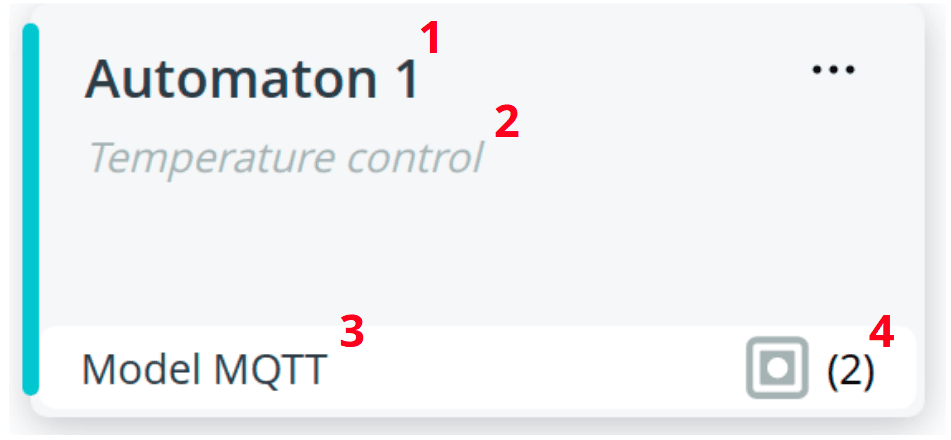Logic
The main purpose of the Logic section is to raise the level of abstraction from the level of
models and elementary components of the device to a full-fledged automatic
interaction with the device in the form of an automation scenario. Each automation scenario
automation scenario is an algorithm that defines the logic of the object behavior. By prescribing
such a scenario, it is possible to take into account all the changes that occur with the
the device, and based on what changes have occurred, the device
can perform the appropriate actions automatically, without the user sending a command.
by the user.
An automation scenario represents
Finite-state machine (opens in a new tab)
and includes states and transitions between them:
-
State characterizes the period of time during which there have been no no changes in the properties of the process. For example, the following states can be added to an automaton states: the device is switched on, at rest, in motion, recorded deviation of readings. If we are talking about an automobile, we can designate the following states states of breakdown, stolen, entering a certain geo-zone, etc.
-
There are transitions between states, which characterize changes in properties of the process. Transitions are initiated by events that have occurred in the system of the device control system. Additional conditions can also be defined in the transition. conditions. When an event is triggered and the specified conditions are met, the transition between states is realized. transition between states. For example, the condition may specify that transition is realized when the specified value is exceeded by the numerical indicator of the sensor. of the sensor. If it is recorded that the value of this indicator has really exceeded the norm, then the transition between states is realized. exceeded the norm, then the transition between the states of the system takes place. The transition must always lead from one state to another.
💡
The principle of constructing an automaton is quite simple. We can make an analogy with the way
the way we think. For example, "I'm awake" happens, so we go into
"I'm awake." Then the event "I felt a headache" occurred,
we go to the state of "I have a headache." In this state, the action to be taken
"Take my temperature." From this state, there are several options
transition: if the temperature is normal or above normal, depending on these conditions.
we move to the corresponding states. In the "Temperature above normal" condition.
you need to take the action "Take a pill" and so on.
The automation scenario built when forming the states and transitions between them defines the logic of automatic control of the object.
them, defines the logic of automatic control of the object. Running the scenario
eliminates the need for constant monitoring and control of the current state of the
of the object by performing any actions in case of triggering certain
events.
Automaton card
- automaton name
- description of the automaton
- the model used in the automaton. If there is more than one model, then next to it in round in parentheses the number of additional models .
- The number of objects added to the automaton. Click on it to apply filter to the list of objects and show only those objects that are related to this automaton

